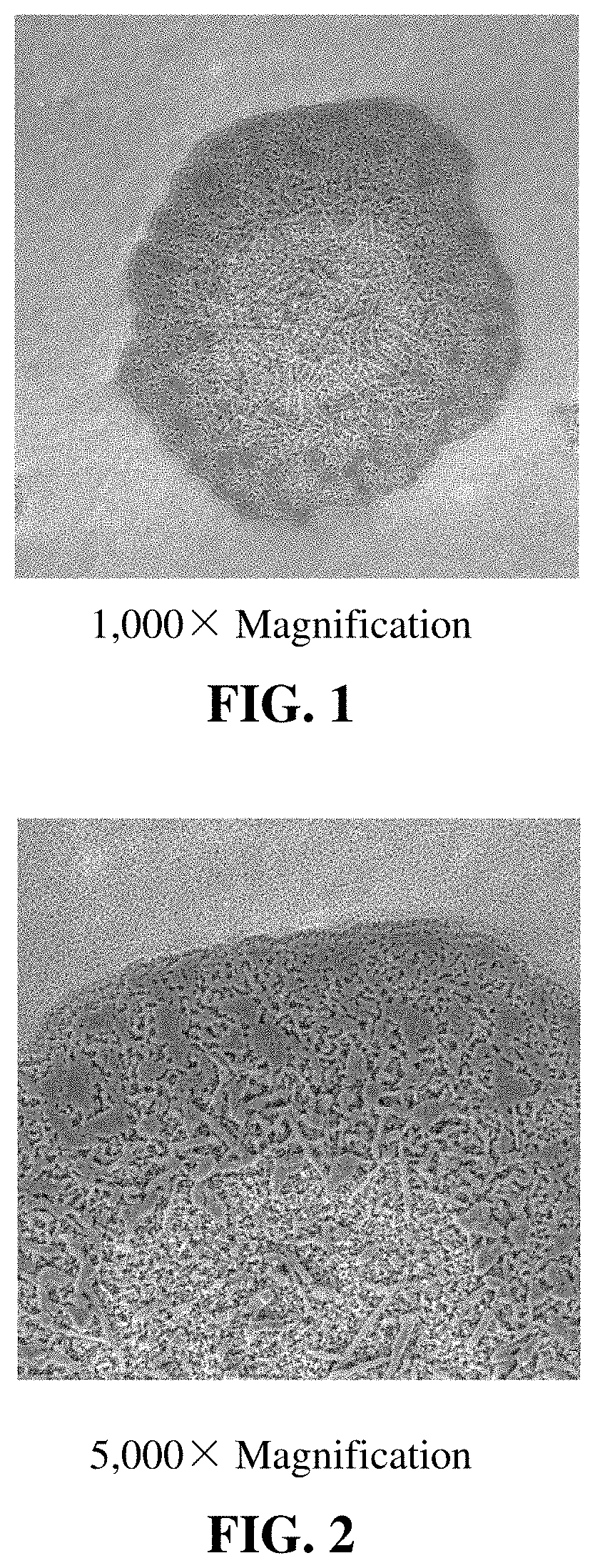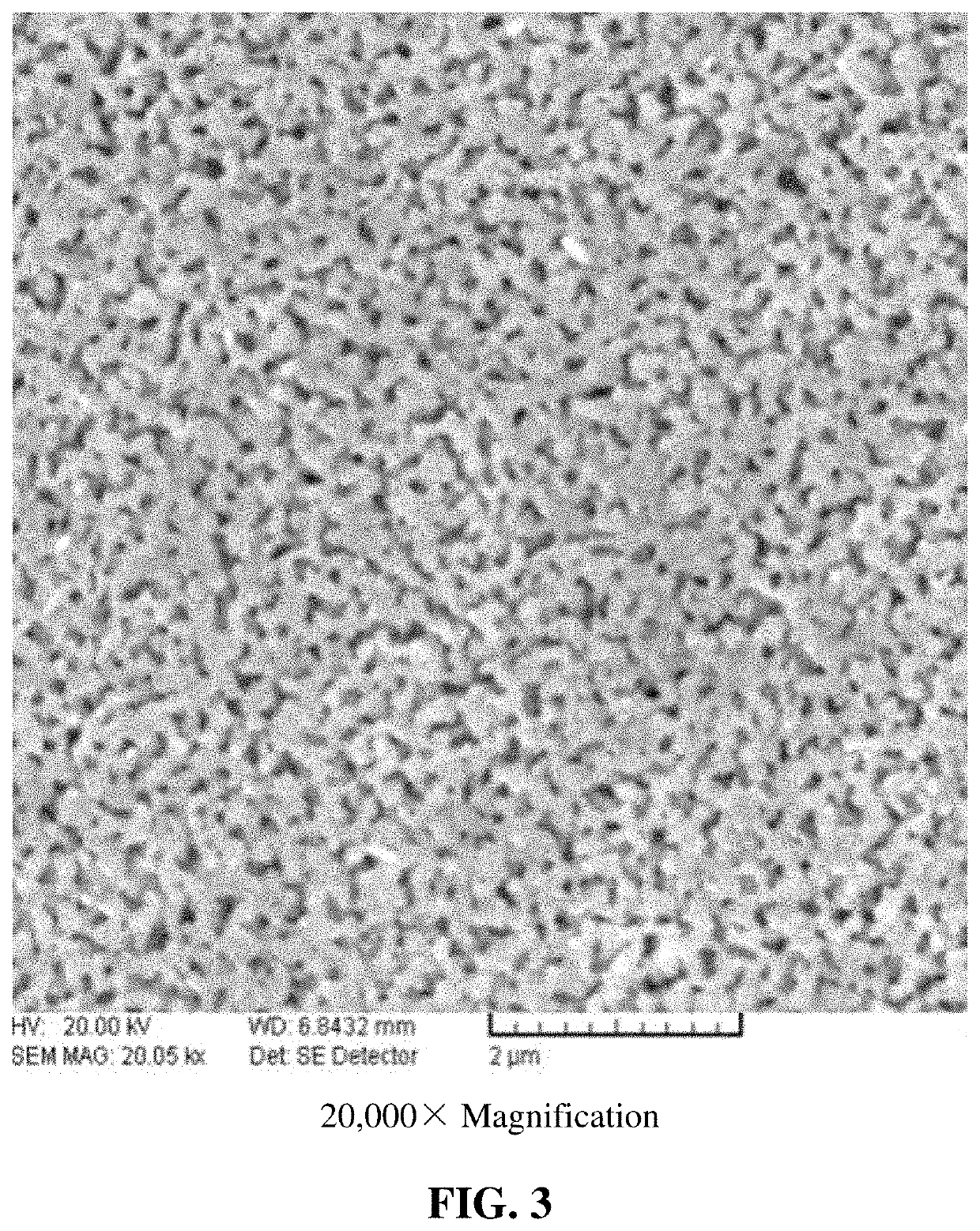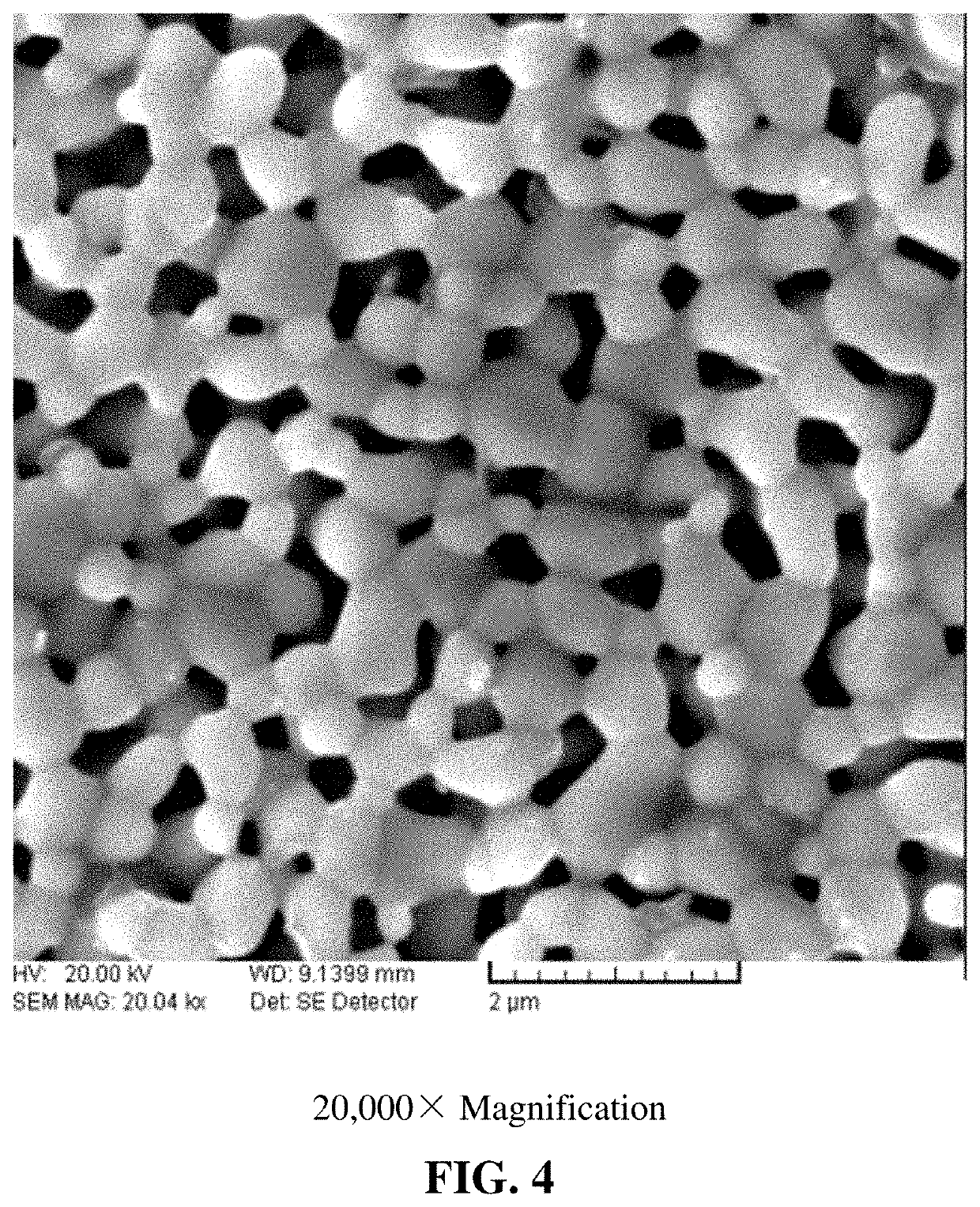Process for Improving Surface Catalytic Efficiency of Catalyst Substrate
a catalyst substrate and surface catalytic efficiency technology, applied in the field of catalyst substrate preparation, can solve the problems of nano-catalysts having some difficulties in the application of catalytic reactions, environmental impact, and use of ammonium sulfate obtained by industrial wastewater conversion, and achieve high uniform dispersibility, reduce heat treatment temperature and/or active reactants, and strengthen the structural strength of fluffy catalysts
- Summary
- Abstract
- Description
- Claims
- Application Information
AI Technical Summary
Benefits of technology
Problems solved by technology
Method used
Image
Examples
example 1
[0051]A process for improving the surface catalytic efficiency of a catalyst substrate without adding a pore former and a flux, can include the following steps:
[0052](1) Dissolving Al(NO3)3.9H2O (0-0.3 g), Li2O3Si (0-0.3 g), Ni(NO3)2.6H2O (0-0.3 g), Cu(NO3)2.3H2O (0-0.3 g), AgNO3 (0-0.3 g), Zn(NO3)2.6H2O (0-0.3 g), and Ti(OC4H9)4 (0-0.3 g) in 100 mL of deionized water, mixed with 2 times the total number of moles of metal ions of citric acid chelating agent, and continuously stirred. If any catalyst compound is not easily dissolved, adding additional 16 mol / L concentrated nitric acid (10-20% of the total number of moles of metal ions of the metal compound put in the deionized water) to help dissolve and prepare a 0.5 mol / L aqueous solution of catalyst particle reagent.
[0053](2) After the added reagent is completely dissolved, the pH is adjusted to 6-7 with ammonia water. If the pH is too low, citric acid will not easily deprotonate to chelate the metal ions; if the pH is too high, t...
examples 2 to 5
[0059]The process is the same as that in Example 1, except for the concentration of the prepared aqueous solution of catalyst particle reagent. Specific methods for preparing the aqueous solution of catalyst particle reagent are listed in the following table:
Preparation MethodExampleAl(NO3)3•9H2O (0-0.3 g), Li2O3Si (0-0.3 g), Ni(NO3)2•6H2O2(0-0.3 g), Cu(NO3)2•3H2O (0-0.3 g), AgNO3 (0-0.3 g),Zn(NO3)2•6H2O (0-0.3 g), and Ti(OC4H9)4 (0-0.3 g) aredissolved in 100 mL of deionized water, mixed with 2times the total number of moles of metal ions of citricacid chelating agent, and continuously stirred. If anycatalyst compound is not easily dissolved, add additional16 mol / L concentrated nitric acid (10-20% of the totalnumber of moles of metal ions of the metal compound putin the deionized water) to help dissolve and preparea 0.1 mol / L aqueous solution of catalyst particle reagent.ExampleAl(NO3)3•9H2O (0-0.3 g), Li2O3Si (0-0.3 g), Ni(NO3)2•6H2O3(0-0.3 g), Cu(NO3)2•3H2O (0-0.3 g), AgNO3 (0-0.3...
example 6
[0060]The process is the same as that in Example 1, except for the heat treatment temperature. In this example, the high temperature furnace is heated to 800° C. The nanometer scale obtained in this example is smaller, about 20-80 nm, as shown in FIG. 3.
[0061]The examples of the present disclosure provide a process for improving the surface catalytic efficiency of a catalyst substrate, with adding a pore former and a flux and reducing the heat treatment temperature and holding time, including the following steps:
[0062](1) Dissolving Al(NO3)3.9H2O (0-0.3 g), Li2O3Si (0-0.3 g), Ni(NO3)2.6H2O (0-0.3 g), Cu(NO3)2.3H2O (0-0.3 g), AgNO3 (0-0.3 g), Zn(NO3)2.6H2O (0-0.3 g), and Ti(OC4H9)4 (0-0.3 g) in 100 mL of deionized water, mixed with 2-2.5 times the total number of moles of metal ions of citric acid chelating agent, and continuously stirred. If any catalyst compound is not easily dissolved, add additional 16 mol / L concentrated nitric acid (10-20% of the total number of moles of metal i...
PUM
| Property | Measurement | Unit |
|---|---|---|
| temperature | aaaaa | aaaaa |
| temperature | aaaaa | aaaaa |
| surface catalytic efficiency | aaaaa | aaaaa |
Abstract
Description
Claims
Application Information
 Login to View More
Login to View More - R&D Engineer
- R&D Manager
- IP Professional
- Industry Leading Data Capabilities
- Powerful AI technology
- Patent DNA Extraction
Browse by: Latest US Patents, China's latest patents, Technical Efficacy Thesaurus, Application Domain, Technology Topic, Popular Technical Reports.
© 2024 PatSnap. All rights reserved.Legal|Privacy policy|Modern Slavery Act Transparency Statement|Sitemap|About US| Contact US: help@patsnap.com










